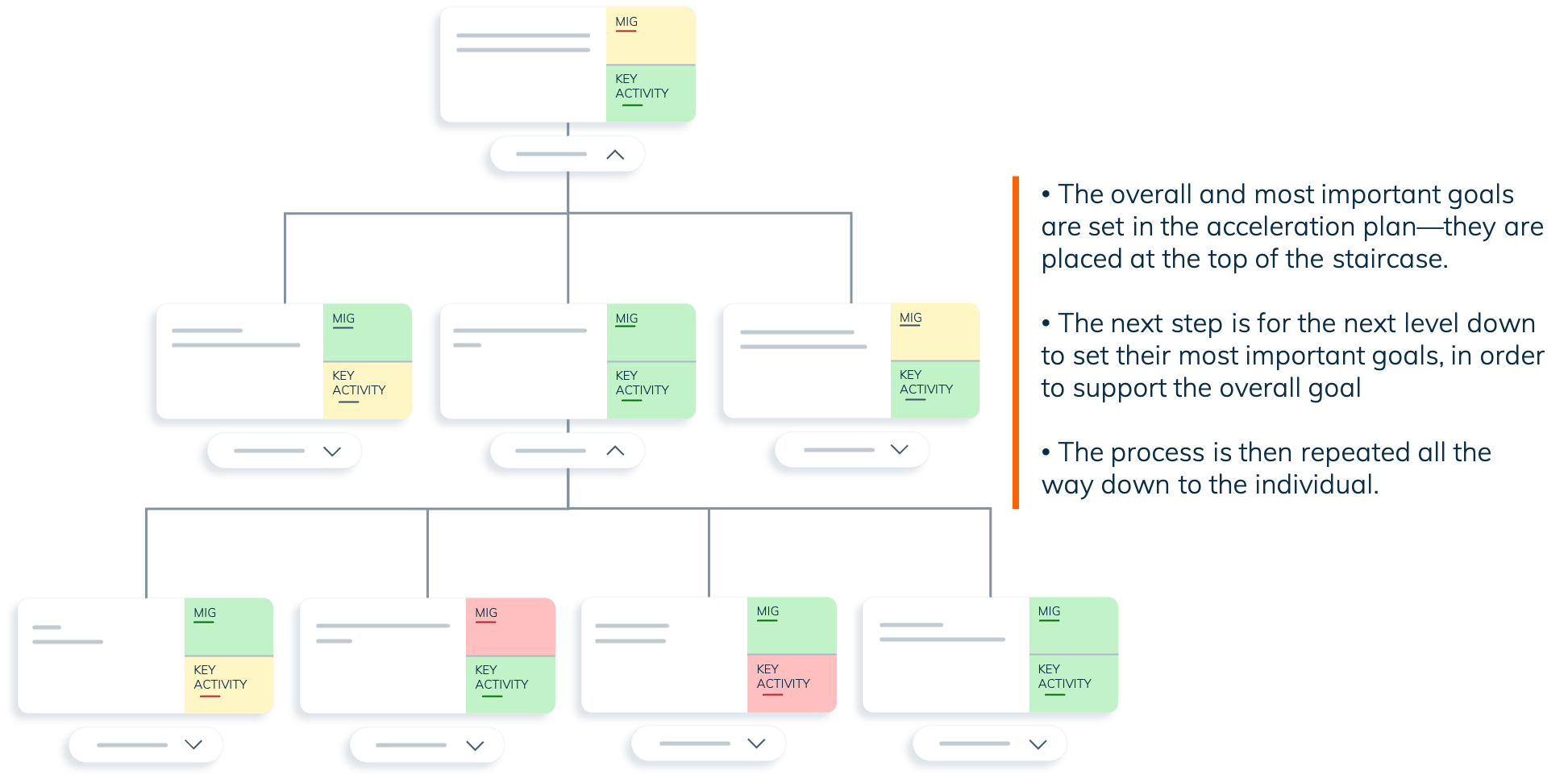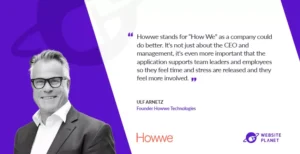In strategy acceleration, we talk about anchoring instead of communication. Anchoring means ensuring that the people that will execute the strategy really understand why—and above all, understand their own role and contribution to this work.
It is important that the anchoring starts as soon as possible. The sooner a CEO or management group begins discussing openly the reason why a strategy acceleration is needed, the better.
Transparency is important
Dare to go outside the management room, share with others that there are ongoing discussions, and dare to get input from other parts of the organization. The transparency leads to less worry and reduces the risk of rumors spreading.
Anchoring is a continuous process
Instead of management doing all the planning, communicating this to the managers and leaders, who in their turn communicate it to all employees (traditional strategy execution), anchoring is a structured continuous process.
In order for the anchoring process to be fairly fast, it needs to be well planned and structured. We recommend that you appoint one person to manage and be responsible for this whole process. CEO and/or management plays an extremely important role in this work; they can under no circumstances delegate the ownership of the acceleration, but need to be highly involved. They always need to be visible and make clear how important this is.

This is a simplified image of an acceleration process that illustrates our view of anchoring.
Step 1 – Anchoring the Why
Management has had an insight and made a decision to begin a strategy acceleration. They formulate why this needs to be done and put together an objective and a vision. In this first step, it is extremely important that there is consensus within management and that they share the same goal. Unfortunately, we have met many management groups that have started a strategy execution process without having consensus. In our experience, it has never led to success.
What needs to be anchored with the managers and leaders first:
- Why we are executing this strategy?
- What happens if we don’t?
- What is our vision?
Their task is then to anchor this within the organization. The anchoring is done in a structured and consistent way throughout the whole organization. One part of the anchoring is also to relay input from the organization back to management.
Step 2 – Anchoring MIGs
In step two, management continues the process of deciding which the most important initiatives are, i.e. what are we focusing on to reach our strategic goals? Then the Most Important Goals (MIGs) are set, as well as a description of what this change will mean for the organization and what the challenges are. This is then anchored following the same structure as in step one.
In traditional strategy execution, the management sets strategic goals and describes them too broadly, and delegates and anchors too early. For example, a strategic goal could be for the company to increase sales by $200M and profit by $40M within three years. Thereafter, these “goals” are delegated and anchored too early down within the company. There is no ”HOW” and a description of the initiatives that affect all or a very large part of the company. In traditional strategy execution, there is no way to control and measure the acceleration, and the link to measurable economic improvement.
Step 3 – How to anchor
In step three, management continues working with how the strategy acceleration will be executed. This is anchored according to the same structure as in steps one and two.
During step three the MIGs are broken down into partial goals and activities for the entire organization. Each department and team develop their MIGs and Key Activities, creating a process from the bottom up that creates commitment.
We are aware that this is a generic description of how this can be done. In reality, the CEO and/or management can anchor and have direct contact with the whole organization when necessary. It does not have to be communicated via managers and leaders in every step and depends on the size of the company. In smaller companies, it is easier for the CEO/management to have direct contact, but in larger companies, you have to find good communication channels where the CEO and management can be visible.
However, our experience tells us that it is crucial to make everybody feel engaged, and that task belongs mainly to the managers and leaders within the organization. They are the ones who daily support, encourage, and lead the work. The most important message is that the anchoring needs to start as soon as possible. Everyone should be involved!
In strategy acceleration, a large part of the anchoring occurs by breaking down the MIGs for each department and team. We will soon explain how this is done.
Anchoring via the acceleration staircase
In acceleration strategy, the largest part of the anchoring is done by involving everybody in the whole organization. The overall strategic goals are broken down in a structured way throughout the organization, all the way to the individual level. Each level in the organization formulates its own goals, which support the overall goals (MIGs). All MIGs have to support the MIG above it. The goal is for everyone to have initiatives and goals formulated that will help the company achieve the overall initiatives and goals.
Breaking down the goals via the staircase makes all employees, teams, and departments engaged in the strategy acceleration and contribute to the goal being reached.
From experience, we know that this part can be very difficult for many companies. We have often seen how “strategic goals” are discussed at the yearly employee development talks, with the hope that this will ignite some individual engagement. It does not work that way. What really works is to break down the goals into tasks on the individual level. Only then will the strategy be integrated into the daily work and the results become tangible and easy to understand.
This image shows how it works

It is important that people at the different levels in the staircase participate and formulate their own goals. This way we achieve the anchoring. Naturally, they have to be in line with the goals of the level above, but that is usually never a problem.
An important question we often get — do all the MIGs in the acceleration staircase have to be measurable in money?
The MIGs at the top of the staircase always have to be measurable in money, or be translatable to “measurable in money”. As many MIGs as possible on the lower levels of the staircase should be measurable in money, but it is not imperative.
In the next post, we’ll explore how you set the most important goals and key activities, and what you do with the other things you have to get done.





